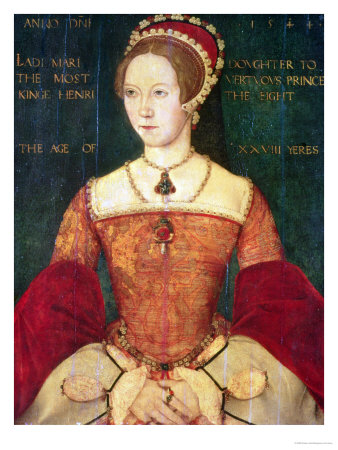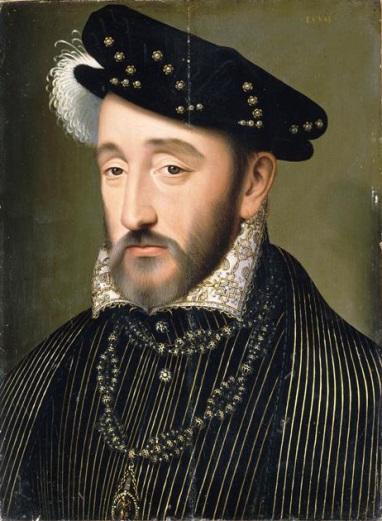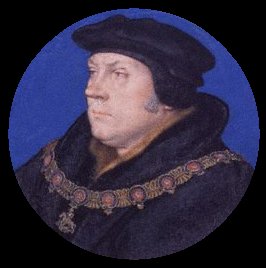Margaret Plantagenet: Life Story
Chapter 6 : My Lady Governess (1525 – 1533)
By 1525, Margaret was reappointed to the role of Lady Governess to Princess Mary. By this point, it was clear that Mary would have no brothers, and Henry was obviously considering her as his heir, although he could never definitely commit to the idea. In 1525, Mary was sent to Ludlow in the Welsh Marches to hold court as the de facto Princess of Wales, as her Uncle Arthur had been in 1501, and her great-uncle Edward V had in 1473. Mary was never officially invested with the title, but was referred to by it from time to time. Margaret went with her to supervise the household as she and Sir Richard Pole had done in 1501.

Margaret's duties were carefully documented. She had charge of the Princess' education (although the teaching was delivered by masters), her health, exercise, diet and recreation.
Margaret, like the King and Queen, patronised the Humanist scholars of Oxford and Cambridge, but her religion was as orthodox as theirs, and she would have ensured that Mary continued to worship in the time-honoured Catholic fashion, with little concession to the evangelical thought spreading its way across Europe and into the Court, with the emergence of Anne Boleyn as a rival to Katharine.
During the period 1525-1528, Margaret and Mary were based in the Marches, but travelled in the region, and returned to London in 1527 for Mary's betrothal (her third, by the tender age of 11) to Henri, Duc d'Orleans, second son of Francois I of France. It was around this time that Margaret's son, Arthur, died.

By 1528, Katharine's position as Queen, and Mary's as Princess of Wales, was beginning to look decidedly precarious. Henry was attempting to have their marriage annulled, so that he could secure the succession with a male heir. Margaret was, presumably, deeply concerned for her friend and for her charge, but Mary's household, although reduced in size and recalled from Ludlow, continued much as before, with Margaret remaining in post.
Margaret and Mary spent the Christmases of 1529 and 1530 at Court, and Henry continued to treat his daughter with affection. Margaret's job must have become increasingly difficult. She would have wanted to shield Mary from the worst of the pain of the breakdown of her parents' marriage, but by the time Henry finally left Katharine in the summer of 1531, it would have been impossible for Mary, by then fifteen and a half, and so considered adult, not to know the full situation.

Until 1533, Margaret was not called upon actively to support Henry's actions against Katharine and the potential disinheriting of Mary, but in 1533, she was obliged to nail her colours to the mast when an order arrived from Thomas Cromwell to the Mary's Lord Chamberlain, Lord Hussey. He was to hand over Mary's jewels, with an inventory, to a Mistress Frances Elmer. Margaret impeded the dispatch of the jewels so far as she could, delaying the production of an inventory, then slowly writing one herself which she ordered Hussey and the other household officials to sign. Still she delayed the handover, refusing to act until she received an order direct from the King.
Hussey excused his failure to obey orders by telling Cromwell that:
“In no wyse she (Margaret) wyll as yete deliyver to Mistress Frances the jewells for anything that I can say or doo onlesse that yt may please you to obteyne the kings letters unto hyr in that behalf.”
Follow up commands to Hussey from Cromwell to sell the Princess' silver plate were answered with the news that he couldn't do so, as the plate was in the hands of "my lady Governesse." It was impossible, Margaret said, that the plate should be sold, as it was used frequently, and could not be disposed of unless replaced. Of course, Margaret added, if the King commanded directly, "she will at all tymes be redy upon her discharge to make thereof delivery."
Henry was beset on all sides by stubborn women. Anne Boleyn was demanding Katharine of Aragon should hand over the christening robes used for her children, which tasteless request Katharine rejected indignantly. Mary was refusing to accept the validity of Henry's new marriage and the demotion to Princess of Wales, which occurred in September 1533, and Margaret was making heavy weather of carrying out any orders. One can almost pity the man.
Angry and frustrated, but still fond of his daughter, Henry reacted to Mary's disobedience by removing those about her, whom he could blame for her obstinacy. Margaret was dismissed from her post, and Mary was sent with only a few attendants to a humiliating position in the household of the recently born Elizabeth.
Margaret was clearly willing to take risks on Mary's behalf, and offered to serve her with a suitable household, at her own expense. Henry was taking no chances, and rejected the offer out of hand. The Imperial Ambassador, Eustace Chapuys, opined that Margaret had been removed to make it easier
"to cause (Mary) to die of grief or in some other way, or else compel her to renounce her rights".
Mary, however, did not need Margaret's stiffening to remain resolved.
Lady Margaret Plantagenet
Family Tree



